The size of the UK Armed Forces examined
Pressure is growing to reverse cuts to troop numbers in response to Ukraine conflict

As Russia brings war to Europe, the number of troops serving in the UK is being reduced to its “lowest since the Napoleonic wars”, a Tory MP has warned.
Boris Johnson was yesterday asked by the Commons Liaison Committee whether he might reconsider the planned defence cuts in the current “era of insecurity”.
Speaking on behalf of his fellow Conservative MP Tobias Ellwood, Tom Tugendhat highlighted cuts to the RAF’s F-35, Typhoon and Hercules fleets, the Army’s tank and fighting vehicle numbers, and the 10,000 reduction in Army troops to 72,500 by 2025. He asked if the government planned to look again at the landmark Integrated Review of Security, Defence, Development and Foreign Policy published last March amid the new “looming threats”.
Subscribe to The Week
Escape your echo chamber. Get the facts behind the news, plus analysis from multiple perspectives.

Sign up for The Week's Free Newsletters
From our morning news briefing to a weekly Good News Newsletter, get the best of The Week delivered directly to your inbox.
From our morning news briefing to a weekly Good News Newsletter, get the best of The Week delivered directly to your inbox.
However, Johnson answered that the review, which laid out plans for defence cuts and transformations, was “pretty much spot on in the priorities it set out for the country”.
Ellwood, chair of the Commons Defence Select Committee, had previously warned that the suggested improvements in cyber defences laid out in the review came at a “huge price to our conventional defence posture with dramatic cuts to our troop numbers, tanks, armoured fighting vehicles”. For instance, the review suggested cutting the strength of the British Army’s infantry to 19,400 soldiers by 2024-25.
Last week Rishi Sunak’s Spring Statement ruled out any additional support for the military, despite pressure for an increase in defence funding and predictions that this would be included. The chancellor “rejected calls from Cabinet colleagues and others to revisit the autumn spending review and sink more money into the military,” noted the i news site.
Labour’s shadow defence secretary John Healey said that, despite the Ukraine war, Sunak’s statement “had no halt to army cuts, no review of defence spending, no reform of military procurement and no change to the real cut in day-to-day MoD spending”.
Sign up for Today's Best Articles in your inbox
A free daily email with the biggest news stories of the day – and the best features from TheWeek.com
The latest Ministry of Defence figures for the Armed Forces, which includes the Army, RAF, Navy and Marines, shows that there were 137,070 full-time trained troops in January. Around 14,160 people left the UK Armed Forces in 2021, an increase of 11.5% on the previous 12 months.
Reductions in military personnel are nothing new. In 2010, the Strategic Defence and Security Review recommended that all three of Britain’s armed forces would take cuts in numbers.
Also, as Statista pointed out, Britain is involved in “far fewer conventional military conflicts today than it was in the past” and “as the size of Britain’s empire declined rapidly after 1945, so too did its global military commitments”.
However, in response to the conflict in Ukraine, calls are growing for troop numbers to be increased, said Forces.net.
During a debate on defence spending in the House of Commons earlier this month, Tory MP Bob Stewart said: “The one thing the Russians are showing is that in order to take territory, you’ve got to put boots on it, and guess what – we’re chucking our boots out. It’s appalling, we’ve got to reverse that decision.”
Create an account with the same email registered to your subscription to unlock access.
-
 Italian senate passes law allowing anti-abortion activists into clinics
Italian senate passes law allowing anti-abortion activists into clinicsUnder The Radar Giorgia Meloni scores a political 'victory' but will it make much difference in practice?
By Chas Newkey-Burden, The Week UK Published
-
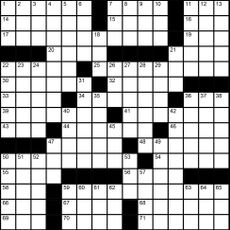 Magazine interactive crossword - May 3, 2024
Magazine interactive crossword - May 3, 2024Puzzles and Quizzes Issue - May 3, 2024
By The Week US Published
-
 Magazine solutions - May 3, 2024
Magazine solutions - May 3, 2024Puzzles and Quizzes Issue - May 3, 2024
By The Week US Published
-
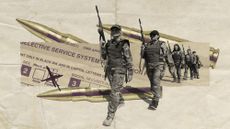 The issue of women and conscription
The issue of women and conscriptionUnder the radar Ukraine military adviser hints at widening draft to women, as other countries weigh defence options amid global insecurity
By Harriet Marsden, The Week UK Published
-
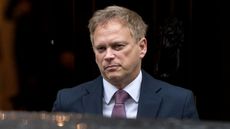 Grant Shapps goes to war on military's 'woke' diversity policies
Grant Shapps goes to war on military's 'woke' diversity policiesTalking Point Defence secretary condemns 'extremist culture' as Army reportedly plans to relax security checks on overseas recruits
By The Week UK Published
-
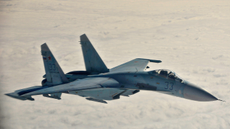 Russian pilot 'tried to shoot down RAF plane'
Russian pilot 'tried to shoot down RAF plane'Speed Read 'Ambiguous' communications triggered the potentially deadly incident in 2022, defence sources say
By Julia O'Driscoll Published
-
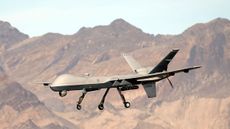 The ethics of military drones
The ethics of military dronesfeature Pilotless bombers play a key role in modern warfare but could AI increase the number of civilian deaths?
By Chas Newkey-Burden Published
-
 ‘Wings of freedom’: could the UK deliver on jets promise to Ukraine?
‘Wings of freedom’: could the UK deliver on jets promise to Ukraine?Talking Point Rishi Sunak considering Volodymyr Zelenskyy‘s planes plea but insider says ‘we haven’t got any f***ing jets to give’
By Chas Newkey-Burden Last updated
-
 Can the UK rely on the British Army to defend itself?
Can the UK rely on the British Army to defend itself?Today's Big Question Armed forces in ‘dire state’ and no longer regarded as top-level fighting force, US general warns
By The Week Staff Published
-
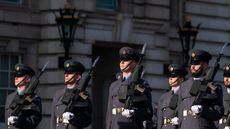 Is the RAF embracing ‘woke ideology’?
Is the RAF embracing ‘woke ideology’?Talking Point Air force under fire after announcing target of 40% of recruits being women by 2030
By The Week Staff Published
-
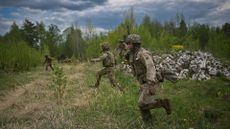 Will Britain have to fight Russia?
Will Britain have to fight Russia?feature New chief, Gen Sir Patrick Sanders, says British Army must be capable of winning wars on land
By The Week Staff Published